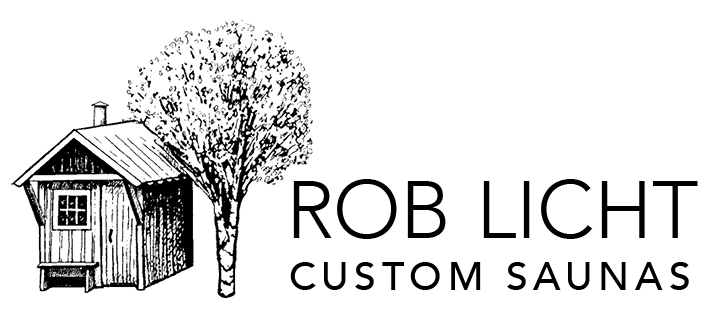
The landscape of Upstate NY is punctuated by the rural agrarian architecture typical of an area rooted in 19th-century traditions. Massive old barns reign supreme and are typically surrounded by a cluster of smaller accessory buildings: smaller barns and equipment sheds, dairies, smokehouses, and, occasionally, if one looks hard enough, a sauna. Sadly, many of the wood-sided buildings have either burned or fallen into abstract heaps of their formal selves. Their replacements— metal-sided Morton buildings and giant fabric-covered hoop structures—are strictly utilitarian and lack the romantic appeal of the old barns. It is the former that inspires the creative in me.
When I was an aspiring young artist, old barns were often my subject matter. My father and I would go for drives in the country and stop to draw landscapes with a barn as the focal point. Now, when I build my saunas, the vernacular of old farm structures is never out of my mind. In particular, I am drawn to the older simple gable roof structures, rather than the more efficient gambrel roof. There is something pleasing about the simple geometry and the formal balance in earlier barns. When additions were made they typically created a hodge-podge of shapes and the formal symmetry was lost.


The barns were typically sided with local pine, nailed vertically with green boards nailed closely but with gaps that would open as the wood dried. These gaps were often covered with narrow battens that were nailed so that the boards could shrink and swell. This is the beauty of board and batten siding: it takes into account that the wood is alive and not a fixed entity. It is this board and batten technique, or variations of it, like reverse board and batten or vertical shiplap, that I often employ. Nailed correctly so it can move, the wood will last for one hundred years, as is evident in many of the old barns still standing.
The best part of this style of siding is that it typically employs local lumber. Most rural towns have a sawmill nearby. In our region mills typically cut White Pine and Hemlock. I rely on a sawmill that has been in operation for 50 years: Collins lumber in Alpine NY. It was started by Bob Collins and continues to be operated by his nephew. The same saw has provided siding for hundreds of barns, sheds, and other outbuildings in the area. What is distinct about the operation is that they use a traditional circular saw. Many newer sawyers use a bandsaw mill, perhaps even a portable unit they can bring to you. What I like about the wood I have been getting from Collins for the past 30 years is that there is a character to it. The circular saw marks on the rough sawn boards create a pattern that has repetition but also pleasing randomness—like jazz. Certain saw teeth will mark more than others. No two boards are alike. It’s not like metal siding, cement board siding, or any manufactured material typically used in construction these days. It speaks of the trees, the mill, and the rural landscape.
It’s the kind of thing you might never notice, except when you come out of the sauna and have time to stare at the inconsequential things in life while you cool off in the fading light of day with the sunbeams raking across the swirling marks left by an old saw blade.


